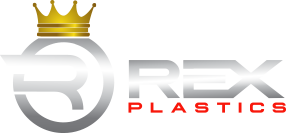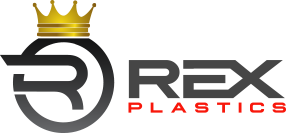Since first opening our doors in 1971, we’ve received quite a few questions from clients and guests over the years. Continually striving to help our customers make informed purchasing decisions, we’ve done our best to offer a list of the most common questions and answers below:
Injection molding starts with small pellets compounded to meet certain physical properties. These pellets are then dried and fed into a hopper, which allows the plastic to be gravity fed into the feed throat of the machine.
The machine then melts the plastic in a heated barrel, and injects it under high pressure out of the barrel and into your mold cavity.
The injected plastic quickly fills the cavity (or cavities), and is then allowed to cool while the machine fills its barrel for the next cycle.
As the plastic cools, it changes back to a solid. After a set amount of time, the mold opens, exposing the part, and hydraulic ejector pins push the part out of the cavity.
If you need high production (1,000 or more per year), low part cost, and repeatability in your product, injection molding may very well be what you are looking for.
There are also geometric considerations for an injection molded part. For instance, you cannot injection mold a bottle, which is blow molded, and you shouldn’t injection mold long profiles, like a window frame or a pipe. Those are extruded.
It usually begins with a CAD file, a drawing (anywhere from a fully dimensioned, computer generated one to a penciled napkin), or a prototype.
We then collect the data required for an injection mold quote and any material requirements you may have, which can be found on our Request a Quote page, or obtained through our interview process.
Once we have all of the information we need, we will complete your quote.
If the project is approved, we ask for an initial investment of 50% of the mold cost to cover material costs, and the building begins.
When the mold is completed, we will produce a sample run of parts out of it, which are included in the price of the mold, and when parts are approved, the remaining 50% of the mold is invoiced Net 30.
Depending on complexity and our tool room load, it can range from 2 to 12 weeks.
There are almost 100,000 materials in the marketplace today, so it can be very overwhelming, but if we can learn about your application, for instance, will the part be outside? What kind of abuse will it need to withstand? We can often recommend grades that are readily available, and less expensive.
Again, varying greatly on complexity, quality, and size, a mold can cost anywhere from $2,000-$3,000 for a simple, single cavity mold, up to $60,000-$100,000 or more for a high production, multi- cavity mold made with hardened tool steel. Typically, the molds we build are in the $8,000 -$20,000 range.
Visit our Request A Quote page, and find out!
A multi-cavity mold has multiple cavities of the same part; a family mold produces a set. For instance, for an electronic enclosure, you may need a front, back, battery door, and a button. Those could all be molded at once in a family mold.
All molds have moving pins in them to eject the part out. Maintenance will include periodic greasing of these pins, as well as all other moving components, and cleaning of the cavity and core surfaces. Best of all, we provide lifetime maintenance at no additional cost on all of our customer molds!
We do not offer fabrication, but we do on occasion machine prototypes for our customers who want to prove out a design before going into production.
A hot runner is an add-on component to an injection mold. Essentially it’s a heated steel plate with channels through it where the plastic flows. The heat keeps the plastic molten until it reaches the actual part cavity. They are used to reduce cavity time, scrap, and to better balance the injection process.


